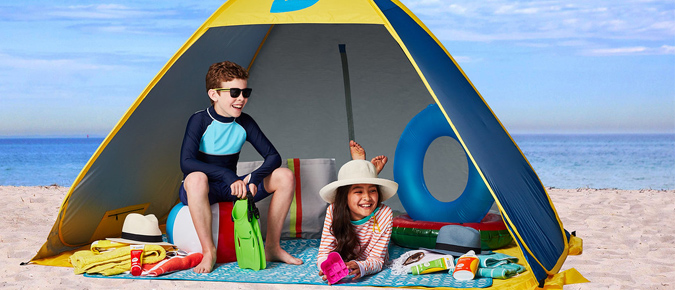
Dr Annika Smith is a consultant Dermatologist and a fellow of the Australasian College of Dermatologists. Dr Smith has a special interest in skin cancer diagnosis and management and is particularly passionate about skin cancer prevention.
We touched base with Dr Smith to get her top 5 tips for protecting your skin this summer, check them out below!
1. Make these 5 elements your friends over summer
- Sunscreen
- A broad brimmed hat
- Sunglasses
- Sun protective clothing
- Shade (and avoiding sun during the peak UV periods in the middle of the day).
We all know it and it sounds simple however very rarely do we do all of the above. The default is to think if you have your sunscreen on that you are right for the day- wrong! Particularly when outdoors during summer, i.e. at the beach, weekend sport.
Using the full complement of sun protective measures (5 elements) offers you the best chance of protection, no one method in isolation offers you complete protection.
Why do we care about this? Well the best sun protection means the best chance of reducing your skin cancer risk. Skin cancer kills and 2 out of 3 Australians will be diagnosed with skin cancer by age 70. Melanoma does not discriminate according to age – it is the leading cancer in the 15 – 39 year old age group. However, most skin cancer is preventable, by minimising excess UV exposure (too much sun).
2. The best sunscreen is the one you will use
Choose a sunscreen you like and will wear – make sure it’s SPF 50+, has Broad Spectrum protection and that you apply the appropriate quantity (one teaspoon for each limb/front and back trunk/face and reapply every 2 hours).
Underapplication of sunscreen effectively reduces the SPF by up to half, so your SPF 50 may be in fact functioning as an SPF 25 if not applied in the right amount.
TIP: Don’t rely on makeup to have the appropriate SPF or broad-spectrum protection needed. It is always best to wear sunscreen under makeup.
3. Don’t forget your eyes
When choosing sunglasses, ensure they meet the Australian Standard for eye protection, choose category 2 or higher and look for an Eye Protection Factor (EPF), ratings of 9 or 10 provide excellent protection.
Your eyes, like your skin are sensitive to UV damage. While ocular (eye) melanoma is rare, it certainly can occur in addition to skin cancers involving the eyelid/skin around the eye.
4. Tanned skin is essentially a sign of distressed skin
Tanned skin signals DNA damage to the skin cells which can serve as a precursor to skin cancer. Fake tan offers an SPF of around 2 (negligible), don’t be lulled into a false sense of security that your tan (real or fake) is offering sun protection.
Excess UV exposure not only contributes to skin cancer risk but causes premature aging of the skin, in other words, it’s a fast track to wrinkles and pigmentation!
5. Know the skin you are in
Regularly survey your skin (around once a month), be on the lookout for anything new or changing and get it seen to promptly by a trained medical professional, whether this be your GP or Dermatologist.
Remember that melanomas can be pigmented (brown/black) and up to 20% may be amelanotic (pink/red/lacking in pigment). The latter tend to be more aggressive and late to diagnosis and require prompt review.
Learn more about how to protect your skin from the sun by visiting our Sun Protection section.








